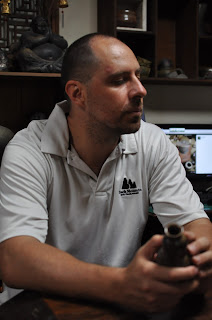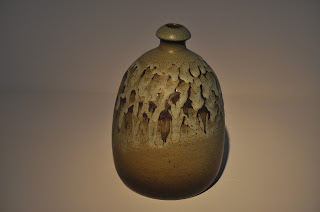 |
| These tea cups were made from high quality Japanese clay. |
 |
| Small milk jugs. We bought 5 of them. The plan is to paint a simple design on them and add a beautiful glaze. |
 |
| Two potters. The guy who has his back to us is our teacher, aged 70! |
 |
| Waiting for some tea while trying to block out the itchiness of the mosquito bite on my head. |
 |
| Annie likes this one. |
 |
| Some of our pottery is in this wood fired kiln. |
 |
| Some local pottery. |
 |
| That sake vessel is mine. |
 |
| An elegant tea pot and cups. |
 |
| Simple but classy. |
 |
| Would make for a nice display. |
 |
| Art. |
 |
| I liked the painting of mountains. |
 |
| Clay that has been made to look like rocks. |
 |
| Beautiful glaze. |
 |
| Zen? |
 |
| Nice. |
 |
| Maybe the holes should be on the bottom and then we can use this bowl as a bonsai pot. |
 |
| Good balance and great colour. |
 |
| Speaks of age. |
 |
| A high quality container. |
 |
| I want to learn how to make this! |
 |
| You could probably drink red wine out of this. |
 |
| I really like the colour. |
 |
| Maybe they just added glaze at the top and let it drip as it was in the kiln? |
 |
| A nice big lip. |
 |
| Older pottery before the invention of the pottery wheel. I can see this as a bonsai pot. |
 |
| Some Taiwanese aboriginal pottery. |




























